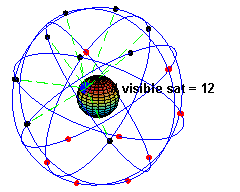
Time to first fix
Encyclopedia
Time To First Fix is a measure of the time required for a GPS receiver to acquire satellite signals and navigation data, and calculate a position solution (called a fix
).

Many receivers can use as many as twelve channels simultaneously, allowing quicker fixes.
Fix (position)
In position fixing navigation, a position fix or simply a fix is a position derived from measuring external reference points.The term is generally used with manual or visual techniques such as the use of intersecting visual or radio position lines rather than the use of more automated and accurate...
).

Scenarios
The TTFF is commonly broken down into three more specific scenarios, as defined in the GPS equipment guide:- Cold or Factory: The receiver is missing, or has inaccurate estimates of, its position, velocity, the time, or the visibility of any of the GPS satellites. As such, the receiver must systematically search for all possible satellites. After acquiring a satellite signal, the receiver can begin to obtain approximate information on all the other satellites, called the almanacGPS signalsThe satellites of the Global Positioning System broadcast radio signals to enable GPS receivers on or near the Earth's surface to determine location and synchronized time. The GPS system itself is operated by the U.S...
. This almanac is transmitted repeatedly over 12.5 minutes. Almanac data can be received from any of the GPS satellites and is considered valid for up to 180 days. Manufacturers typically claim the factory TTFF to be 15 minutes.
- Warm or Normal: The receiver has estimates of the current time within 20 seconds, the current position within 100 kilometers, and its velocity within 25 m/s, and it has valid almanac data. It must acquire each satellite signal and obtain that satellite's detailed orbital information, called ephemerisGPS signalsThe satellites of the Global Positioning System broadcast radio signals to enable GPS receivers on or near the Earth's surface to determine location and synchronized time. The GPS system itself is operated by the U.S...
data. Each satellite broadcasts its ephemeris data every 30 seconds, and is valid for up to four hours.
- Hot or standby: The receiver has valid time, position, almanac, and ephemeris data, enabling a rapid acquisition of satellite signals. The time required of a receiver in this state to calculate a position fix may also be termed Time to Subsequent fix (TTSF)
Many receivers can use as many as twelve channels simultaneously, allowing quicker fixes.
External links
- US Coast Guard, Navigation Center's NAVSTAR GPS User Equipment Introduction.

